
Aisne is a French department in the Hauts-de-France region of northern France. It is named after the river Aisne. In 2020, it had a population of 529,374.

Abbécourt is a commune in the Aisne department in the Hauts-de-France region of northern France.

Pantin is a commune in the northeastern suburbs of Paris, Île-de-France, France. It is located 6.4 km (4.0 mi) from the centre of Paris. In 2019 its population was estimated to be 59,846. Pantin is located on the edge of the city of Paris and is mainly formed by a plain crossed by national roadway 2 and 3, the Paris–Strasbourg railway line and the canal de l'Ourcq.

The Oise is a river of Belgium and France, flowing for 341 km (212 mi) from its source in the Belgian province of Hainaut, south of Chimay. It crosses the border with France after about 20 km (12 mi), and flows into the Seine at Conflans-Sainte-Honorine, a north-western suburb of Paris. Its main tributary is the Aisne. It gave its name to the French departments of Oise and Val-d'Oise.

Saint-Quentin is a city in the Aisne department, Hauts-de-France, northern France. It has been identified as the Augusta Veromanduorum of antiquity. It is named after Saint Quentin of Amiens, who is said to have been martyred there in the 3rd century.

Gagny is a commune in the eastern suburbs of Paris, France. It is located 14.2 km (8.8 mi) from the center of Paris.

Crépy-en-Valois is a commune located in the Oise department in northern France. It is located in the Paris Metropolitan Area, 57.8 km (35.9 mi) northeast of the center of Paris.
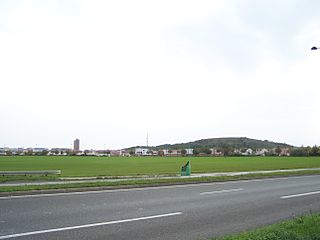
Élancourt is a commune in the Yvelines department, and the Île-de-France region, north central France. It is located in the western suburbs of Paris, 30.6 km (19.0 mi) from the center of Paris, in the "new town" of Saint-Quentin-en-Yvelines.
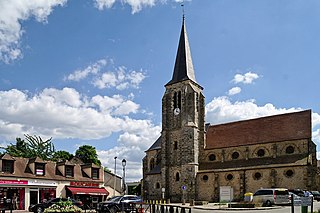
Guyancourt is a commune in the Yvelines department in the Île-de-France region in north-central France. It is located in the south-western suburbs of Paris, 21.2 km (13.2 mi) from the center of Paris, in the "new town" of Saint-Quentin-en-Yvelines.

Asfeld is a commune in the Ardennes department in the Grand Est region of north-eastern France, formerly named Ecry or Ecri.

Achery is a commune in the department of Aisne in the Hauts-de-France region of northern France.
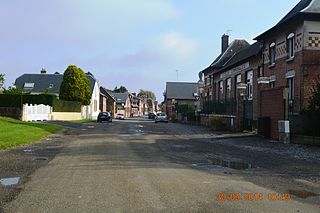
Alaincourt is a commune in the department of Aisne in the Hauts-de-France region of northern France.

Autreville is a commune in the department of Aisne in the Hauts-de-France region of northern France.

Versigny is a commune in the Aisne department in Hauts-de-France in northern France. It is a member of the Communauté de communes des Villes d'Oyse. It is situated between Saint-Quentin, Laon and Chauny.

Bassoles-Aulers is a commune in the department of Aisne in the Hauts-de-France region of northern France.
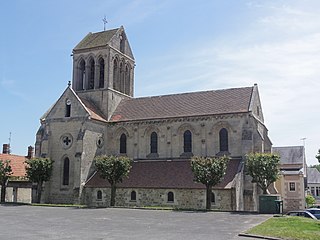
Bourg-et-Comin is a commune in the department of Aisne in Hauts-de-France in northern France.

The Canal latéral à l'Oise is a canal in northern France that, along with the river Oise, connects the Canal de Saint-Quentin at Chauny to the Seine at Conflans-Sainte-Honorine. See under the river Oise for the continuation of the route; the junction is made downstream of the lock at Janville 49.45750°N 2.85933°E. When a canal is latéral, it follows the course of the river it is named after but in a separate excavated channel. The route described below is the 34 km of canal parallel to the river Oise and 103.5 km of the canalised river Oise.

The Canal de Saint-Quentin is a canal in northern France connecting the canalised river Escaut in Cambrai to the Canal latéral à l'Oise and Canal de l'Oise à l'Aisne in Chauny.
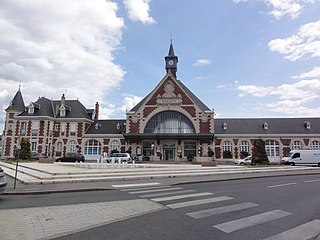
Chauny station is a railway station serving the town Chauny, Aisne department, northern France. It is situated on the Creil–Jeumont railway.
Raymond Couvègnes was a French sculptor and medallist.































